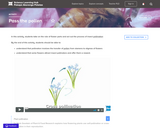
In this activity, students take on the role of flower parts and act out the processes of insect pollination.
- Subject:
- Science
- Material Type:
- Activity/Lab
- Provider:
- Science Learning Hub
- Date Added:
- 10/02/2017

In this activity, students take on the role of flower parts and act out the processes of insect pollination.
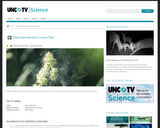
In this lesson, students compare and contrast the processes of sexual reproduction and asexual reproduction by examining plant reproduction.

Students will use the Canopy in the Clouds panoramas to examine plants on the ground and in the canopy of the cloud forest. They will observe root structures of large and small terrestrial and aerial plants at different sites. Students will also relate rooting strategies to nutrient availability.

In this lesson, students will make observations and inferences about the different structures and functions of plant physiology through a hands-on cycle of exploration. Students will rotate through a series of varied stations.

This is the first of two lessons about reproduction in plants. This lesson covers how most plants normally reproduce - sexually.
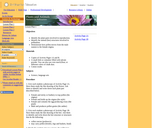
In this lesson, students identify the plant parts involved in reproduction and the bee structures involved in pollination. Students will also model the process of pollination and then meet in small groups to discuss the role each organism plays in the pollination process.
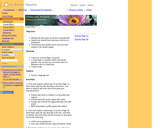
In this lesson students will identify the plant parts involved in reproduction, identify the animal (bee) structures involved in pollination, and demonstrate how pollen moves from the male stamen to the female stigma. The lesson closes with a discussion about the benefits to both the bee and the plant in the pollination process. Note: This is the first lesson in a 3-lesson series; each lesson can be used independently.
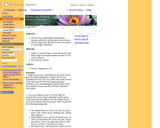
In this lesson, students will: ?Describe the complementary relationships between pollinators and the plants they pollinate. ?Identify adaptations that flowers have developed to "encourage" pollination.

In this lesson students will describe the complementary relationships between pollinators and the plants they pollinate, and to identify adaptations that flowers have developed to encourage pollination. Note: This is the first lesson in a 3-lesson series; each lesson can be used independently.
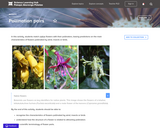
In this activity, students match native flowers with their pollinators, basing predictions on the main characteristics of flowers pollinated by wind, insects or birds. Students will understand how the structure of a flower is related to attracting pollinators.

This lesson focuses on the process of pollination. The learning objectives include learning the anatomy and physiology of flowers, the ecology of pollination, and a focus on plants as essential players in the natural world.
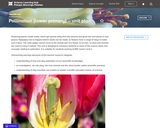
Unit designed to introduce students to some of the science ideas and concepts relating to pollination.

Answer Key can be found in Instructor Notes. Drawing completed by Jeff Wolfhope.

This course was created by the Rethink Education Content Development Team. This course is aligned to the NC Standards for 6th Grade Science.

This course was created by the Rethink Education Content Development Team. This course is aligned to the NC Standards for 6th Grade Science.

This course was created by the Rethink Education Content Development Team and is aligned to the NC Standards for 6th Grade Science.
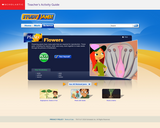
In this video, students learn that flowering plants have many parts that are required for reporduction. These parts work together to make seeds. The importance of bees in this process is discussed in the video.
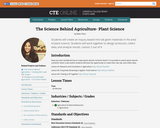
Students will create an inquiry based mini lab given materials in the area of plant science. Students will work together to design protocols, collect data, and analyze results. Lesson 2 out of 4

In this lesson, students learn many plants have adaptations for seed dispersal.

Students will investigate how different variables (such as type of seed, growth medium, amount of water, amount of light, and temperature) affect seed growth. The activity is designed to take students approximately 10 hours over a 2-week period.